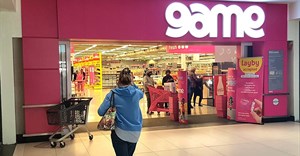Trending





 6 tips to help scale up your small businessGrant Lapping
6 tips to help scale up your small businessGrant Lapping
Elections 2024
Changing POP display behaviour
We all know that in most categories increased facings equals increased sales. Unfortunately this continues to be the major, and often the only, metric that justifies POP return on investment (ROI). It is an important measure, but in an industry where there's incessant pressure to do more with less, it's critical that we make POP sweat even harder for both the brand and the retailer.
Previously when I led brands that were either category captains or lieutenants, the formula for success was pretty rudimentary. Secure promotional slots with the retailer, offer a discount over the period and garner as much off-location display place as possible.
All one had to do was then vehemently drive display compliance and voila, you had a great spike in sales over the promotional period. In most cases the additional sales versus baseline and/or same period last year (SPLY) usually delivered double digit ROI.
We painfully uncovered that this was a shallow indicator. The spike in value/volume didn't necessary translate into baseline gains over the mid to long term (in most cases the baseline regressed or remained stagnant). What's more, as soon as you went off promotion, your competitor would then activate and share points would seesaw without significant gains for the category.
Fortunately there is a way to double ROI and win additional retailer mindshare. Mindshare that will be more receptive to innovation and creativity.
Here are some of the drivers that are making it more challenging and/or expensive when it comes to POP display:
- Retailers are no longer the purveyors of brands. They are the brand. Their mandate is now to decrease shopper angst, reduce clutter and deliver a consistent shopper experience.
- Private label takes prominence. As a brand, retailers have more interest to drive their own unique offerings (usually with higher margins) giving them preferential display locations.
- One size fits all. Many brands are creating the same POP displays for Retailer A, B and C. If I was a retailer and saw the exact same display stand in one of my competitors, I would question how important my business is to the brand and whether they understand my unique strategic category objectives and the shoppers I serve.
- Category consideration. Brands tend to take a singular view on POP in terms of what it will do for their sales and neglect the impact it will have on the category. Retailers are looking for the net effect on the category, not just the seesaw gains and losses between competing brands which inevitably cancel each other out.
- Sharing. Although POP displays are often designed within specific retailer guidelines, often retailers only get to see what hits their floors when the promotion breaks. How often is retailer opinion sought on a scamp or prototype of the unit with a full rationale before execution? How often is the retailer sent a full post-campaign analysis outlining what the unit did for the brand and the category complemented with further recommendations for the future?
- Always giving something away. Most executions are too focused on price and/or a competition element at the expense of changing purchasing behaviour for long-term gain.
Although an arduous yet highly profitable journey, most of the above can be addressed if one looks at shopper behaviour. Shoppers are on autopilot and unconscious purchasing habits rule. POP display offers a great vehicle to influence shopper behaviour. It's arguably one of the best mechanisms to break the brand/solution from out of the background. This requires weighted creativity and considered functionality, in addition to optimal locations and adjacencies.
Combined with the short-term sales objectives, brands should give equal weighting to influencing shopper habits in the longer term. Do they want to create, maintain or break a shopper habit? Consummately answer one of these questions, skilfully customise the display accordingly (retailer and shopper), vigilantly execute and long-term gain and exponential ROI is inevitable.
Hopefully in the very near future we'll migrate from POP to POB - Point of Behaviour Display.













